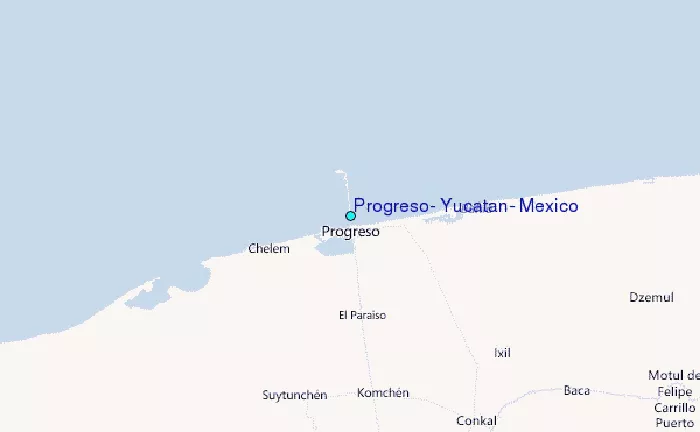Progreso, officially known as Progreso de Castro, is a vibrant port city in Mexico’s Yucatán Peninsula. It serves as a major gateway for cruise ships and a popular beach destination for both tourists and locals.
This article explores:
- Geographical Location – Where Progreso is situated and why it matters
- Cultural Significance – Traditions, food, and local life
- Economic Importance – Trade, tourism, and industry
- Ecology & Environment – Beaches, wildlife, and conservation
By the end, you’ll understand why Progreso is a key destination in the Yucatán.
Geographical Location
Progreso’s Position in Mexico
- Located in Yucatán State, on the Gulf of Mexico coast.
- Coordinates: 21.2833° N, 89.6667° W
- Distance from Mérida (state capital): ~30 km (19 miles) north
- Nearest major airport: Mérida International Airport (MID)
Why Its Location Matters
- Deep-Water Port – One of Mexico’s most important shipping hubs.
- Cruise Ship Destination – A top stop for Caribbean cruises.
- Beach Access – Long stretches of white sand attract tourists.
Key Nearby Attractions
- Chicxulub Crater – The famous dinosaur extinction site.
- Dzibilchaltún – Ancient Mayan ruins.
- El Corchito – A natural reserve with cenotes.
Cultural Significance: Traditions & Local Life
History of Progreso
- Founded in 1872 as a port for the henequen (sisal) trade.
- Named after Mexican President Sebastián Lerdo de Tejada (originally “Progreso de Castro”).
- Played a key role in Yucatán’s economic boom in the 19th century.
Local Culture & Festivals
- Carnaval de Progreso – A lively pre-Lenten festival with parades.
- Feria del Mar (Sea Fair) – Celebrates fishing and maritime culture.
- Traditional Food – Must-try dishes include:
- Panuchos (stuffed tortillas)
- Ceviche de pulpo (octopus ceviche)
- Cocoteros (coconut-based drinks)
Language & People
- Most locals speak Spanish, but Yucatec Maya is still used.
- Friendly, welcoming community with strong ties to fishing and tourism.
Economic Importance: Trade, Tourism & Industry
1. Port of Progreso – Mexico’s Deepest Port
- Handles commercial ships, oil tankers, and cruise liners.
- Critical for imports/exports (automobiles, electronics, agriculture).
- Cruise Tourism – Over 300,000 visitors annually.
2. Fishing Industry
- Major source of shrimp, grouper, and octopus.
- Supplies seafood to Mérida and international markets.
3. Tourism & Real Estate
- Beachfront hotels and resorts attract snowbirds (winter visitors).
- Affordable cost of living makes it popular with expats.
Economic Challenges
- Hurricane risk (e.g., Hurricane Isidore in 2002).
- Dependence on seasonal tourism.
Ecology & Environment: Beaches, Wildlife & Conservation
Natural Features
- Progreso Beach – Long, shallow waters (safe for swimming).
- Los Corchitos Reserve – Mangroves and freshwater cenotes.
- Flora & Fauna – Home to flamingos, sea turtles, and tropical fish.
Environmental Concerns
- Beach erosion due to storms and construction.
- Plastic pollution from tourism.
- Coral reef damage from port activities.
Conservation Efforts
- Beach clean-up programs by local volunteers.
- Protected areas like El Corchito.
- Eco-tourism initiatives to promote sustainability.
Conclusion
Progreso, Yucatán, is a city that harmoniously blends its historical roots, cultural richness, economic vitality, and natural beauty. Its strategic location on the Gulf of Mexico, coupled with ongoing development initiatives, positions Progreso as a significant destination in Mexico’s southeastern region.

